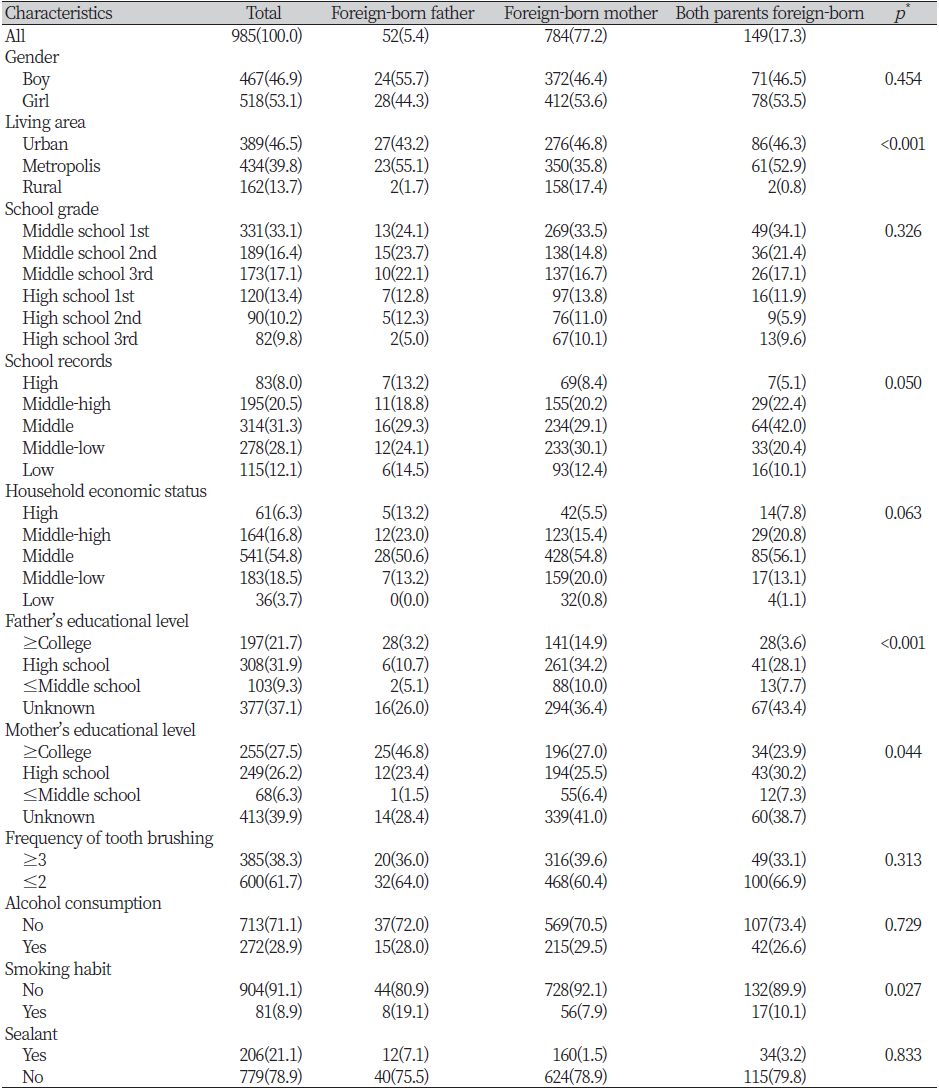Abstract
This study aimed to evaluate the oral symptoms experiences of Korean adolescents among multicultural families. Data on 985 participants from the 16th Korea Youth Risk Behavior Web-based Survey were collected and analyzed using complex sample descriptive statistics. The foreign-born mother, foreign-born parents, and foreign-born father rates were 77.2%, 17.3%, and 5.4%, respectively. The toothache, gingival bleeding, tooth fracture, and tooth sensitivity experience rates were 21.3%, 18.8%, 13.3%, and 30.4%, respectively. The tooth fracture rate was highest in the foreign-born parents group (24.6%). The toothache odds ratio (OR) was 1.71 (95% CI: 1.24–2.37) times higher in girls. The foreign-born mother group was 2.47 (95% CI: 1.09-5.60) times higher than that of the foreign-born father or both parents foreign-born groups. The smoking group was 2.03 (95% CI: 1.20-3.43) times higher than that of the non-smoking group. The gingival bleeding OR was 5.11 (95% CI: 1.80-14.53) times higher in the lowest economic status group. The tooth fracture OR was 3.44 (95% CI: 1.01-11.70) times higher in the lowest economic status group. The tooth sensitivity OR was 1.53 (95% CI: 1.14-2.04) times higher in girls. It is necessary to establish a program to promote oral health of adolescents from multicultural families.
Figures & Tables

Table 1. Distribution of general characteristics according to the parental nationality Unit: N(%)


